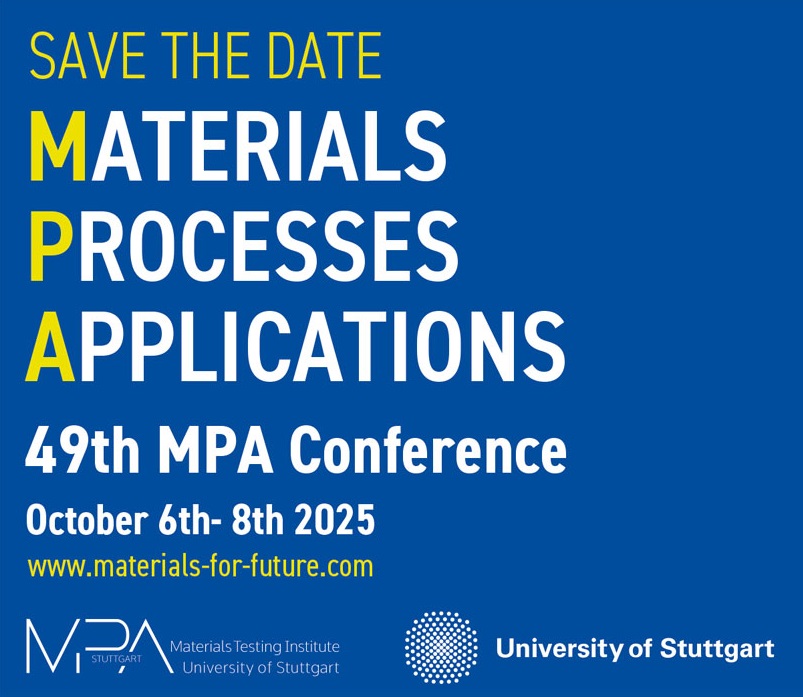
- This event has passed.
49th Materials Processes Applications Conference

📅 October 6th – 8th 2025📍 Stuttgart, Germany
The intricate interaction between materials, processes, and applications is the backbone of innovation and performance optimization. Materials must be carefully selected and designed to meet the specific demands of various applications, considering factors like strength, durability, and thermal resistance. In contrast to their continuum mechanical models, real materials have a real microstructure with imperfections, anisotropy, segregations, discontinuities, pores and residual stresses.
These result from the respective manufacturing process of the material or component and have a significant influence on the material behavior and structural integrity in safety-critical applications. This dynamic relationship among materials, processes, and applications is a key focal point in advancing several sub-fields in mechanical engineering, with each element influencing the overall success of mechanical engineering endeavors.
- Materials:
At the core of the MPA conferences attention lies the pivotal role of materials, where they confront a host of complex challenges. While steel in various forms as austenitic or martensitic continues to play a crucial role, evolving applications necessitate the use of other materials like nickel-based alloys, titanium and high-strength aluminum.
- Processes:
At the MPA seminar, processes are not only understood as manufacturing processes in the classic sense. Instead, complex load cases are also regarded as processes resulting from the application and having a decisive influence on the structural integrity and life time of components.
- Applications:
Applications in materials and mechanical engineering vary widely, each demanding specific attributes from materials and (manufacturing) processes. These requirements include specific strength, creep resistance, and the ability to perform in high and low-temperature environments.
📎 Read more and register here!!
